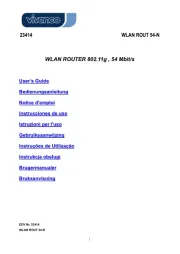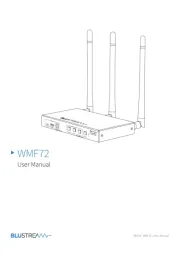INSTRUCTION MANUAL
GUIDE D'UTILISATION
MANUAL DE INSTRUCCIONES
INSTRUCTIVO DE OPERACIÓN, CENTROS DE SERVICIO Y PÓLIZA
DE GARANTÍA. ADVERTENCIA: LÉASE ESTE INSTRUCTIVO ANTES
DE USAR EL PRODUCTO.
DEWALT Industrial Tool Co., 701 Joppa Road, Baltimore, MD 21286
(AUG06) Form No. A18652-00 D26670 Copyright © 2006 DEWALT
The following are trademarks for one or more D WALT power tools: the yellow and black color scheme; the E
“D” shaped air intake grill; the array of pyramids on the handgrip; the kit box configuration; and the array of
lozenge-shaped humps on the surface of the tool.
D26670
Heavy-Duty Compact Router
Toupie compacte de service intensif
Rebajadora compacta para trabajo pesado
If you have questions or comments, contact us.
Pour toute question ou tout commentaire, nous contacter.
Si tiene dudas o comentarios, contáctenos.
1-800-4-D WALT • www.dewalt.comE
IF YOU HAVE ANY QUESTIONS OR COMMENTS ABOUT THIS OR ANY DEWALT TOOL,
CALL US TOLL FREE AT: 1-800-4-DEWALT (1-800-433-9258)
General Safety Rules
WARNING! Read all instructions. Failure to follow all instructions listed below
may result in electric shock, fire and/or serious injury. The term “power tool” in all
of the warnings listed below refers to your mains-operated (corded) power tool or
battery-operated (cordless) power tool.
SAVE THESE INSTRUCTIONS
1) WORK AREA SAFETY
a) Keep work area clean and well lit. Cluttered or dark areas invite accidents.
b) Do not operate power tools in explosive atmospheres, such as in the presence of
flammable liquids, gases or dust. Power tools create sparks which may ignite the dust
or fumes.
c) Keep children and bystanders away while operating a power tool. Distractions can
cause you to lose control.
2) ELECTRICAL SAFETY
a) Power tool plugs must match the outlet. Never modify the plug in any way. Do not
use any adapter plugs with earthed (grounded) power tools. Unmodified plugs and
matching outlets will reduce risk of electric shock.
b) Avoid body contact with earthed or grounded surfaces such as pipes, radiators,
ranges and refrigerators. There is an increased risk of electric shock if your body is
earthed or grounded.
c) Do not expose power tools to rain or wet conditions. Water entering a power tool will
increase the risk of electric shock.
d) Do not abuse the cord. Never use the cord for carrying, pulling or unplugging the
power tool. Keep cord away from heat, oil, sharp edges or moving parts. Damaged
or entangled cords increase the risk of electric shock. Replace or repair damaged cords.
Make sure your extension cord is in good condition. Use only 3-wire extension cords that
have 3-prong grounding-type plugs and 3-pole receptacles that accept the tool’s plug.
e) When operating a power tool outdoors, use an extension cord suitable for outdoor
use. Use of a cord suitable for outdoor use reduces the risk of electric shock. When using
an extension cord, be sure to use one heavy enough to carry the current your product will
draw. An undersized cord will cause a drop in line voltage resulting in loss of power and
overheating. The following table shows the correct size to use depending on cord length
and nameplate ampere rating. If in doubt, use the next heavier gauge. The smaller the
gauge number, the heavier the cord.
Minimum Gauge for Cord Sets
Volts Total Length of Cord in Feet
120V 0-25 26-50 51-100 101-150
Ampere Rating
More Not more AWG
Than Than
0 - 6 18 16 16 14
3) PERSONAL SAFETY
a) Stay alert, watch what you are doing and use common sense when operating a
power tool. Do not use a power tool while you are tired or under the influence of
drugs, alcohol or medication. A moment of inattention while operating power toolsmay
result in serious personal injury.
b) Use safety equipment. Always wear eye protection. Safety equipment such as dust
mask, non-skid safety shoes, hard hat, or hearing protection used for appropriate condi-
tions will reduce personal injuries.
c) Avoid accidental starting. Ensure the switch is in the off-position before plugging
in. Carrying power tools with your finger on the switch or plugging in power tools that have
the switch on invites accidents.
d) Remove any adjusting key or wrench before turning the power tool on. A wrench or
a key left attached to a rotating part of the power tool may result in personal injury.
e) Do not overreach. Keep proper footing and balance at all times. This enables better
control of the power tool in unexpected situations.
f) Dress properly. Do not wear loose clothing or jewellery. Keep your hair, clothing and
gloves away from moving parts. Loose clothes, jewellery or long hair can be caught in
moving parts. Air vents often cover moving parts and should also be avoided.
g) If devices are provided for the connection of dust extraction and collection facilities,
ensure these are connected and properly used. Use of these devices can reduce dust-
related hazards.
4) POWER TOOL USE AND CARE
a) Do not force the power tool. Use the correct power tool for your application. The
correct power tool will do the job better and safer at the rate for which it was designed.
b) Do not use the power tool if the switch does not turn it on and off. Any power tool
that cannot be controlled with the switch is dangerous and must be repaired.
c) Disconnect the plug from the power source and/or the battery pack from the power
tool before making any adjustments, changing accessories, or storing power tools.
Such preventive safety measures reduce the risk of starting the power tool accidentally.
d) Store idle power tools out of the reach of children and do not allow persons unfamil-
iar with the power tool or these instructions to operate the power tool. Power tools
are dangerous in the hands of untrained users.
e) Maintain power tools. Check for misalignment or binding of moving parts, breakage
of parts and any other condition that may affect the power tools operation. If dam-
aged, have the power tool repaired before use. Many accidents are caused by poorly
maintained power tools.
f) Keep cutting tools sharp and clean. Properly maintained cutting tools with sharp cutting
edges are less likely to bind and are easier to control.
g) Use the power tool, accessories and tool bits etc., in accordance with these instruc-
tions and in the manner intended for the particular type of power tool, taking into
account the working conditions and the work to be performed. Use of the power tool
for operations different from those intended could result in a hazardous situation.
5) SERVICE
a) Have your power tool serviced by a qualified repair person using only identical
replacement parts. This will ensure that the safety of the power tool is maintained.
Specific Safety Rules for Routers
• Hold tool by insulated gripping surfaces when performing an operation where the cut-
ting tool may contact hidden wiring or its own cord. Contact with a “live” wire will make
exposed metal parts of the tool “live” and shock the operator.
• Use clamps or another practical way to secure and support the workpiece to a stable
platform. Holding the work by hand or against your body leaves it unstable and may lead to
loss of control.
• Never run the motor unit when it is not inserted in one of the router bases. The motor
is not designed to be handheld.
• Keep handles dry, clean and free from oil and grease. This will enable better control of
the tool.
• Keep hands away from cutting area. Never reach under the workpiece for any reason.
Keep the router base firmly in contact with the workpiece when cutting. Hold the router
only by the handles. These precautions will reduce the risk of personal injury.
• Use sharp cutters. Dull cutters may cause the router to swerve or stall under pressure.
• Never touch the bit immediately after use. It may be extremely hot.
• Be sure that the motor has stopped completely before you lay the router down. If the
cutter head is still spinning when the tool is laid down, it could cause injury or damage.
• Be sure that the router bit is clear of the workpiece before starting the motor. If the bit
is in contact with the workpiece when the motor starts it could make the router jump, causing
damage or injury.
• Do not press spindle lock button while the motor is running. Doing so can damage the
spindle lock.
WARNING: Wear appropriate hearing protection during use [ANSI S12.6 (S3.19)]. Under
some conditions and duration of use, noise from this product may contribute to hearing loss.
WARNING: Some dust created by power sanding, sawing, grinding, drilling, and other con-
struction activities contains chemicals known to cause cancer, birth defects or other reproduc-
tive harm. Some examples of these chemicals are:
• lead from lead-based paint.
• crystalline silica from bricks and cement and other masonry products.
• arsenic and chromium from chemically-treated lumber (CCA).
Your risk from these exposures varies, depending on how often you do this type of work. To
reduce your exposure to these chemicals: work in a well ventilated area, and work with approved
safety equipment, such as those dust masks that are specially designed to filter out microscopic
particles.
WARNING: Avoid prolonged contact with dust from power sanding, sawing, grinding,
drilling, and other construction activities. Wear protective clothing and wash exposed
areas with soap and water. Allowing dust to get into your mouth, eyes, or lay on the skin may
promote absorption of harmful chemicals.
WARNING: Use of this tool can generate and/or disburse dust, which may cause serious and
permanent respiratory or other injury. Always use NIOSH/OSHA approved respiratory protection
appropriate for the dust exposure. Direct particles away from face and body.
WARNING: ALWAYS USE SAFETY GLASSES. Everyday eyeglasses are NOT safety
glasses. Also use face or dust mask if cutting operation is dusty. ALWAYS WEAR CERTIFIED
SAFETY EQUIPMENT:
• ANSI Z87.1 eye protection (CAN/CSA Z94.3)
• ANSI S12.6 (S3.19) hearing protection
• NIOSH/OSHA/MSHA respiratory protection
• The label on your tool may include the following symbols. The symbols and definitions are as
follows:
V ...................... volts A ..........................amperes
Hz ....................hertz W ......................... watts
min ...................minutes ....................... alternating current
.................direct current no .........................no load speed
.................... Class I Construction .........................ear thing ter minal
(grounded) ........................ safety alert symbol
..................... Class II Construction …/min ..................revolutions or reciprocations
(double insulated) per minute
BPM ..............beats per minute
Motor
Your DEWALT tool is powered by a D WALT-built motor. Be sure your power supply agrees with E
the nameplate marking.
120 V means your tool may be operated with alternating current only. Do not connect your tool
to a direct current power supply. All DEWALT tools are factory tested; if this tool does not oper-
ate, check the power supply.
D26670 Heavy-Duty Compact Router
D26670 Heavy-Duty Compact Routers are designed for flush and bevel trimming of laminated
plastics and other similar materials that have a bonding agent too hard to be trimmed with
ordinary tools.
The tilt-base allows trimming into corners inaccessible to standard routers. This model also
allows the trimming of laminated surfaces joining at angles of 45° to 90°. This feature eliminates
the need for hand-trimming in many applications.
The off-set base is used to trim into the corner of a back splash and for trimming narrow
ledges.
Selecting the Bit
WARNING: Projectile hazard. Only use bits with 1/4" (6.4 mm) shanks. Smaller shank bits will
not be secure and could become loose during operation.
These routers are equipped with a 1/4" (6.4 mm) diameter collet which accepts bits having 1/4"
(6.4 mm) diameter shanks. Bits are available as an accessory.
NOTE: It is recommended that the unit only be used with bits that have a cutting diameter of
13/16" (20.6 mm) or less.
Defi nitions: Safety Guidelines
The definitions below describe the level of severity for each signal word. Please read the
manual and pay attention to these symbols.
DANGER: Indicates an imminently hazardous situation which, if not avoided, will
result in death or serious injury.
WARNING: could Indicates a potentially hazardous situation which, if not avoided,
result in death or serious injury.
CAUTION: Indicates a potentially hazardous situation which, if not avoided, result may
in minor or moderate injury.
CAUTION: Used without the safety alert symbol indicates a potentially hazardous
situation which, if not avoided, may result in property damage.




















